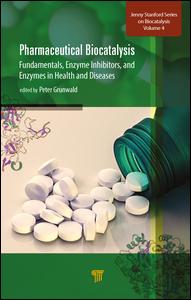

Most ebook files are in PDF format, so you can easily read them using various software such as Foxit Reader or directly on the Google Chrome browser.
Some ebook files are released by publishers in other formats such as .awz, .mobi, .epub, .fb2, etc. You may need to install specific software to read these formats on mobile/PC, such as Calibre.
Please read the tutorial at this link: https://ebookbell.com/faq
We offer FREE conversion to the popular formats you request; however, this may take some time. Therefore, right after payment, please email us, and we will try to provide the service as quickly as possible.
For some exceptional file formats or broken links (if any), please refrain from opening any disputes. Instead, email us first, and we will try to assist within a maximum of 6 hours.
EbookBell Team

4.1
30 reviewsThis book provides an overview of the world market of therapeutic enzymes and enzyme inhibitors, rare diseases, orphan drugs, the costs of drug development and therapies, and enzymes in downstream processing of pharmaceuticals. It discusses carbonic anhydrase inhibitors and their multiple drug interactions, carboxylesterase inhibitors for pharmaceutical applications, employment of inhibitors for the treatment of neurodegenerative diseases, use of engineered proteins, bioactive peptides, and fibrinolytic enzymes for thrombolytic therapy, and enzymes important for the design and development of new drugs/drug metabolites such as aldehyde oxidases and cytochrome P450 enzymes and the role the latter play in vascular biology and pathophysiology. The treatment of cancer is explored in connection with enzymatic amino acid deprivation therapies and new drugs that act as chemical degraders of oncogenic proteins. The book also introduces the resistance mechanisms of cancer. Furthermore, it provides an insight into the relationship between pathological conditions of cardiovascular disease and oxidative stress. The text also focuses on the potential use of nanoparticles as carriers for enzymes with medical relevance, computer-aided drug design for the identification of multi-target directed ligands, and the development of improved therapeutics through a glycan-“designer” approach. It concludes with an introduction to the chemoenzymatic synthesis of drugs.